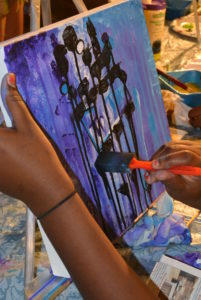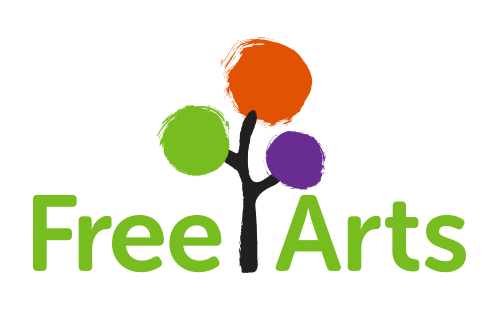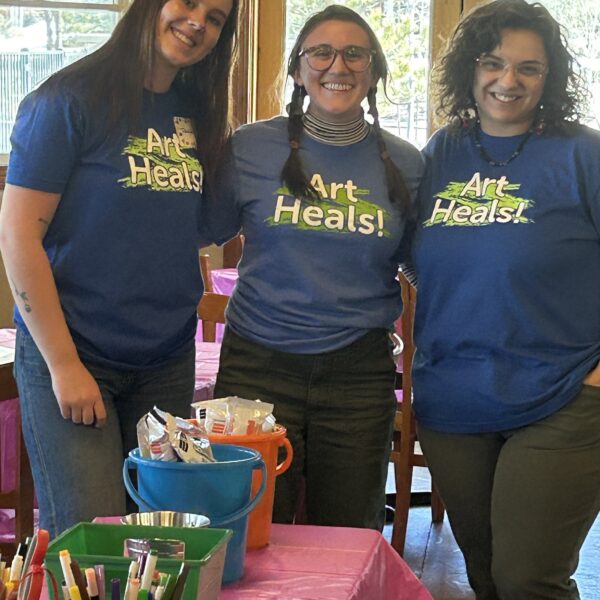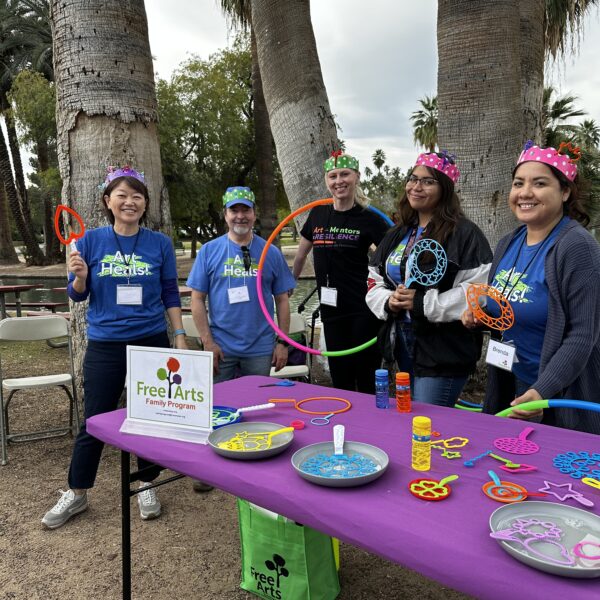
Resilience is defined as the ability to bounce back. But in our experience at Free Arts, resilience is much more intricate. At Free Arts, we define resilience as the ability to encounter trauma or disruption, allow that experience to shake you, process and learn from that experience, return to your own sense of identity and belonging, and move forward in a positive direction.
This is a lengthy process and how, might you ask, do we get there?
We know that art, created within the safety of strong, positive relationships, is a key method for achieving resilience.
Here’s why:
Emotional Processing
Art allows you to process your experiences and emotions outside of your head. When you create a painting of your emotions or a drawing of a difficult situation, you place that situation outside yourself. It no longer defines you and, now that it is outside of your brain, you can more actively understand and problem solve. Art helps us figure out who we are.
In a world where so many people turn to unhealthy ways of coping with trauma and stress (drugs, alcohol, self-harm), art gives people a positive way to process and reflect on their experiences.
Gaining Power Over Stories
Creating about a traumatic experience allows you to gain power over that experience. Take the example of a young lady in Free Arts Theater Camp who, after never sharing her experiences aloud with anyone, wrote about her trauma in a spoken word poetry piece. After the writing, she realized that she had the power to control her experiences rather than letting those experiences control her. She chose to read her poem aloud on stage to an audience of more than 300 people, and she watched as her story powerfully impacted audience members, inspiring them to also want to share their stories.
Changing the Brain
In addition to creating about past trauma as a way to process and shape identity, making art (or dance or music) can also physiologically impact the brain. A study titled, How Art Changes Your Brain led by neurologists Anne Bolwerk and Christian Maihofner observed “a significant improvement in psychological resilience” as well increased levels of “functional connectivity” in the brain amongst participants who engaged in art activities.
If you are able to identify an artistic medium that really resonates with you, you may experience “flow” when working in that art form. According to Steven Kotler, author of The Rise of Superman: Decoding the Science of Ultimate Human Performance, flow is an “optimal state of consciousness where we feel our best and perform our best. In flow, concentration becomes so laser-focused that everything else falls away. Action and awareness merge. Our sense of self and our sense of self-consciousness completely disappear”.
Working Through Challenges
Art helps build resilience by teaching important lessons about working through challenges and mistakes. Take Jose, who works on his visual arts projects with maximum precision. At the beginning of Jose’s Mentor Program with Free Arts he would rip his projects in half as soon as he perceived a mistake. Over the 8 weeks of the program, his mentors were able to work with him to help him understand that “there are no mistakes in art”. Together they came up with creative ways to use Jose’s “mistakes” in his pieces. At the end of the program, Jose changed his framework for understanding mistakes and now referred to them as “happy accidents” and created right on through them!



